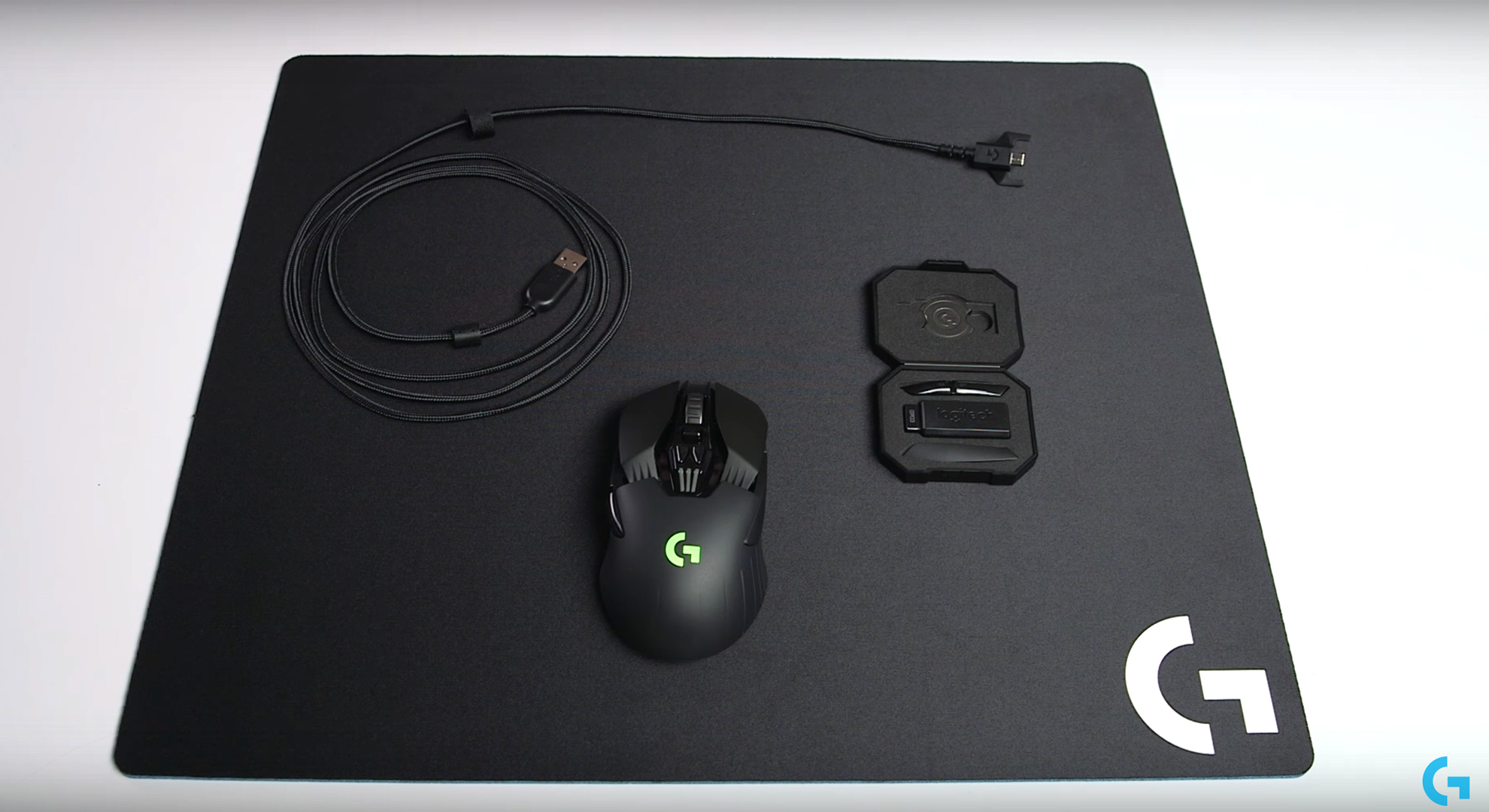What next for the gaming mouse?

It’s been a long time since a gummed-up tracking ball, a thick cable and buttons with all the tactile clarity of custard skin have been acceptable as a gaming mouse. The technology has advanced hugely in the last decade alone; lasers, intricate physical switches and early attempts at RF-frequency wireless have seen to that. But where does the cutting edge lie now? Can the technology ever become, in the words of Arthur C Clarke, ‘sufficiently advanced to be indistinguishable from magic?’
Arguably we’re reaching a tipping point. A hundred-odd gram mouse with no cables that’s faster and more accurate than a wired one, powered by a battery that never needs charging? A disconnected device glowing with color-customizable lights that does everything remotely, automatically… endlessly? That looks pretty magic even in 2017.
Take the wireless connections made by Logitech’s G-series mice. First introduced with the G900 as a ‘pro-grade’ technology, it’s since been refined to the point where it either matches or exceeds the performance of wired gaming mice. This connection has since been dubbed LIGHTSPEED by Logitech G.
Light always does 186,000 miles per second, no matter how or where you measure it – it can also be slowed down. The lowest recorded speed is currently 38mph, through supercooled sodium. You just have to understand that the travel time (and thus speed) lost occurs as a photon – a particle of light – hits a molecule, is absorbed, and is then re-emitted on the other side. In between molecules, light continues to travel at lightspeed.
All of which is to say that engineering this technology is not easy, and while early wireless connections were slower and less stable than wires, there remained plenty of room for progress.
This makes the technology in LIGHTSPEED ideal for professional tournaments, which is why it’s become the choice of pro esports players and leagues including Cloud9’s Timothy "Autimatic" Ta, as well as Søren "Bjergsen" Bjerg and Peter "Doublelift" Peng from team TSM. There’s no tougher proving ground than global competition where fortunes in the millions rely on split-second accuracy and utter dependability.

The lack of a cable to snag or drag at your inputs is an obvious benefit, and it allows an elegant, ergonomic design with no compromises. But it also dictates a battery to power the mouse, and having that go flat and the mouse disconnect at a critical moment will ruin any gamer’s day. This is where magic reappears… the POWERPLAY system, again from Logitech G, charges the mouse even as you use it. Or while it just sits there. It never needs plugging in, so it never goes flat.
POWERPLAY uses electromagnetic induction fields to wirelessly pass a charge to the mouse, which then uses it to recharge its battery. It provides enough power for a gaming mouse and even charges the mouse while it is in motion. It works on the mousemat, which is laid on top of the base, leaving a clean, uncluttered desktop. The hard and soft mats are offered, according to preference.
Optical sensors use infrared/LED light, which scans surfaces very accurately without being confused by imperfections. While acceleration is a commonly used term to describe this phenomenon, its naming is somewhat misleading. What’s actually happening is there’s a speed related variance in the accuracy. In essence, there’s an inaccuracy that occurs as the mouse is moved faster.

One way to combat this is with smoothing (sometimes known as filtering). This is where the mouse ditches readings that fall outside what it thinks is the general direction of motion, on the grounds they’re probably wrong. The trouble is they might not be – especially if you’re playing with high resolutions and high refresh-rate displays, when your reactions can be very precise. The result is less jittery but the same; accuracy goes out the window.
The PMW3366 is so highly regarded because it works right across its sensitivity range without any smoothing, filtering or acceleration. It operates at speeds up to 400ips, meaning extreme accuracy no matter how twitchy or pixel-perfect you get. So that’s the state of the art now. But where next? On this evidence, you’d have to say… maybe actual magic.
Check out this page to learn more about Logitech G’s LIGHTSPEED and POWERPLAY technology.
Sponsored by Logitech
Sign up for breaking news, reviews, opinion, top tech deals, and more.